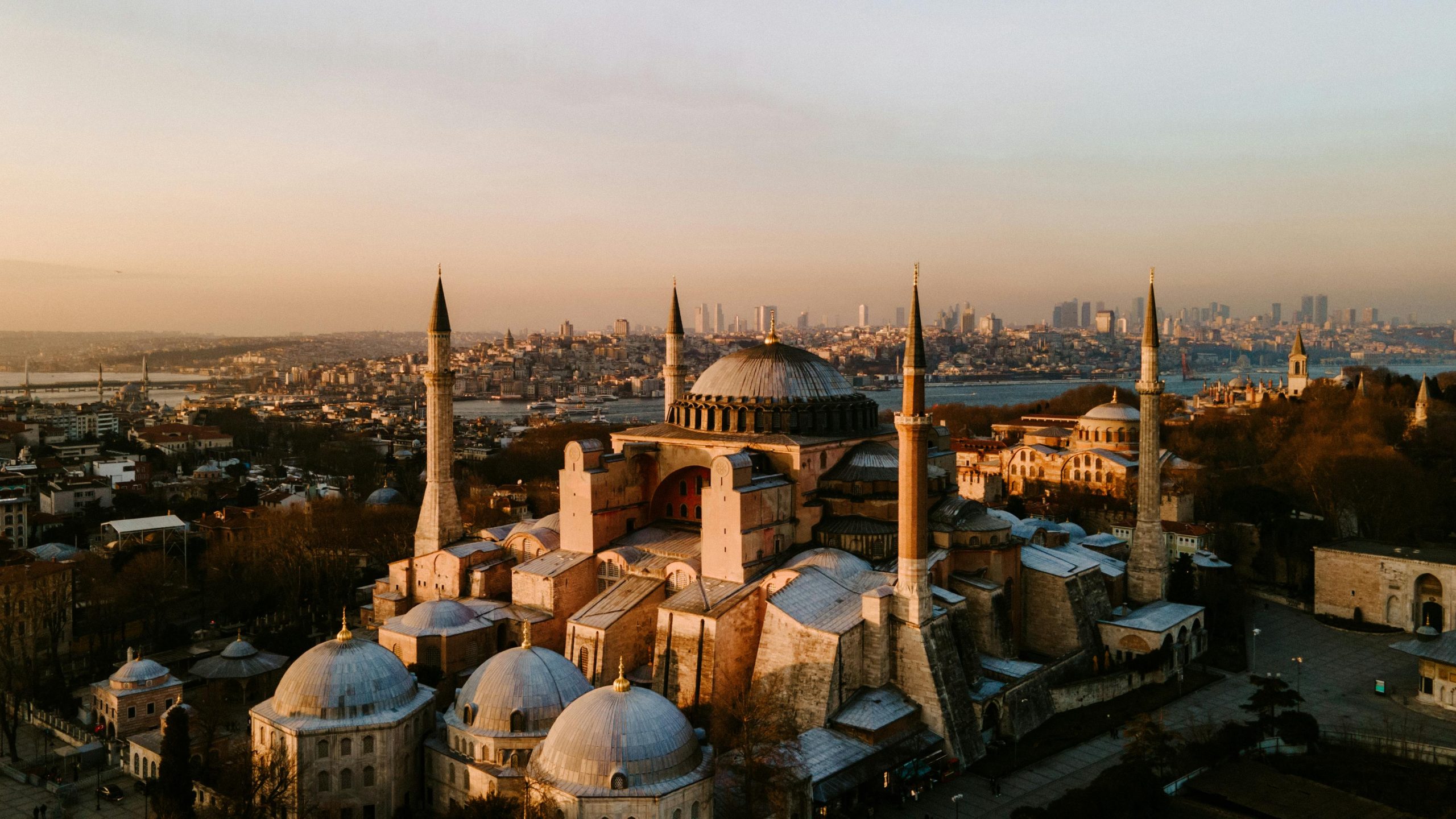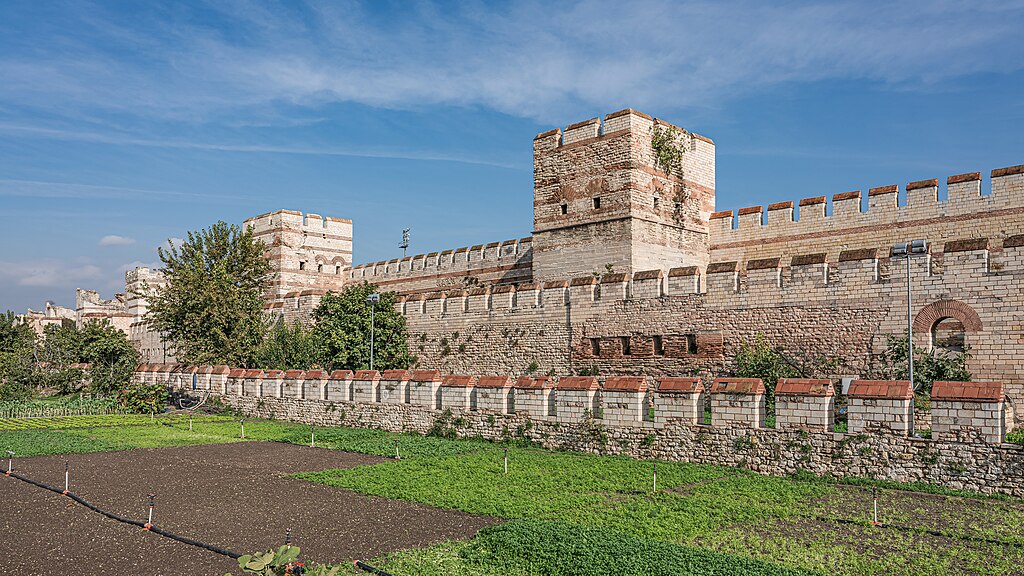Great Palace Mosaics Museum, Istanbul
Museum in Istanbul

Tucked away beneath the Arasta Bazaar, just behind the Blue Mosque, the Great Palace Mosaics Museum offers a fascinating window into the artistic brilliance of Byzantine Constantinople. Once part of Emperor Constantine's Great Palace, this underground gallery showcases vibrant floor mosaics dating back to around 450–550 AD. While smaller and quieter than Hagia Sophia or Chora Church, it's one of the best places to visit in Istanbul for travelers seeking to experience the refined artistry of the Eastern Roman world up close.
The mosaics — once forming a grand courtyard pavement of over 1,800 square meters — now lie almost exactly where they were discovered. Depicting scenes of daily life, mythological beasts, and exotic animals locked in combat, they capture both the imagination and the sophistication of Byzantine art. Often visited on walking tours of Istanbul's Old City, the museum offers a peaceful and atmospheric escape beneath the bustle of Sultanahmet.
Table of Contents
- History and Significance of the Great Palace Mosaics Museum
- Things to See and Do at the Great Palace Mosaics Museum
- How to Get There
- Practical Tips on Visiting the Great Palace Mosaics Museum
- Is the Great Palace Mosaics Museum worth visiting?
- FAQs for Visiting the Great Palace Mosaics Museum
- Nearby Attractions to the Great Palace Mosaics Museum
History and Significance of the Great Palace Mosaics Museum
The mosaics displayed here once adorned the peristyle courtyard of the Palatium Magnum, or Great Palace, the main residence of the Byzantine emperors between the 4th and 10th centuries. Created during the reign of Emperor Justinian I, these intricate designs were made from over 40,000 pieces of colored stones, limestone, and glass. Unlike religious mosaics, these works celebrated everyday life and mythic imagination: wrestlers, hunters, children at play, griffins, elephants, and lions all feature in vivid movement across the floor.
By the 7th and 8th centuries, when iconoclasm led to restrictions on figurative art, the mosaics were covered over with marble panels — effectively preserving them from later damage. As the Byzantine court relocated to the Blachernae Palace near the Golden Horn, the Great Palace fell into disuse, and over time a residential neighborhood was built atop its ruins. The mosaics remained buried and forgotten until 1921, when a fire revealed fragments of their brilliance. Subsequent excavations led by archaeologists from St. Andrews University (1935–1951) uncovered the site, and in 1997, it was officially opened as the Great Palace Mosaics Museum.
Things to See and Do at the Great Palace Mosaics Museum
Walking through the museum's raised pathways, visitors can view sections of the mosaic pavement preserved in situ. The level of detail is breathtaking — leopards hunting gazelles, bears attacking serpents, and children leading donkeys all unfold in vibrant tesserae. The mosaic composition is free from religious iconography, focusing instead on nature, myth, and daily life — a rare survival of secular Byzantine art. Informative panels provide context about the scenes and their symbolism, while subtle lighting highlights the vivid contrasts of color and form.
In addition to the mosaics, exhibits include fragments of columns and architectural decorations unearthed during the excavations. The museum's quiet ambiance and proximity to the Blue Mosque make it an ideal detour for travelers looking to explore beyond Istanbul's more crowded attractions. Before leaving, take a moment to step out into the Arasta Bazaar above — where centuries of history still hum beneath the cobblestones.
How to Get There
The Great Palace Mosaics Museum is located in Sultanahmet, beneath the Arasta Bazaar, directly behind the Blue Mosque. The T1 tram line stops at Sultanahmet station, about a five-minute walk away. For visitors arriving by train, Sirkeci railway station is roughly 15 minutes on foot. You can use the official TCDD Taşımacılık website to check schedules, compare routes, and purchase tickets for Turkey's national and regional trains operated by TCDD. For a more streamlined experience (especially if you prefer an English interface or want to compare across countries), we recommend using Omio, which allows you to easily compare prices, schedules, and book train tickets across Turkey and the rest of Europe — all in one place. Drivers will find limited parking near the Hippodrome or along Kennedy Avenue, but the area is best explored on foot. If you are looking to rent a car in Turkey I recommend having a look at Discover Cars, first, as they compare prices and review multiple car rental agencies for you.
Practical Tips on Visiting the Great Palace Mosaics Museum
- Best time to visit the Great Palace Mosaics Museum: Morning or early afternoon for a quiet visit.
- Entrance fee in Euros: Around €5.
- Opening hours: Daily, 9:00 AM–6:00 PM (closed on Tuesdays).
- Official website: https://mozaikmuzesi.istanbul
- How long to spend: 30–45 minutes.
- Accessibility: Accessible via stairs; limited wheelchair access.
- Facilities: Restrooms, small gift shop at the exit.
- Photography tip: Use the museum's soft lighting to capture detail without flash.
- Guided tours: Included in some Sultanahmet cultural tours.
- Nearby food options: Cafés and restaurants within the Arasta Bazaar and around the Blue Mosque.
Is the Great Palace Mosaics Museum worth visiting?
Absolutely. The Great Palace Mosaics Museum is one of the top sights in Istanbul for those who appreciate art and archaeology. It reveals the luxurious aesthetic of Byzantine life, beyond the grandeur of domes and icons, through scenes of humor, nature, and humanity. Quiet, beautifully preserved, and historically rich — it's a hidden gem that rewards curious visitors with an intimate look at Constantinople's golden age.
FAQs for Visiting the Great Palace Mosaics Museum
Are the mosaics original?
Yes, they are preserved in situ, remaining where they were discovered beneath the Great Palace.
Is it suitable for children?
Yes, older children often enjoy spotting the animals and mythical creatures depicted in the mosaics.
Can I take photos?
Yes, photography is permitted without flash.
Are there guided tours?
Audio guides and occasional guided tours are available.
Is it crowded?
Usually not — it's one of the quieter museums in Sultanahmet.
Nearby Attractions to the Great Palace Mosaics Museum
- Blue Mosque – Istanbul's most famous mosque, just above the museum.
- Hagia Sophia – The city's iconic Byzantine basilica, a short walk away.
- Basilica Cistern – The 6th-century underground water reservoir of Emperor Justinian.
- Arasta Bazaar – A charming Ottoman-era marketplace filled with handicrafts and souvenirs.
- Sultanahmet Square – The ancient Hippodrome, surrounded by some of Istanbul's top monuments.
The Great Palace Mosaics Museum appears in our Complete Guide to Visiting Istanbul!
This website uses affiliate links which may earn a commission at no additional cost to you!
Visiting Great Palace Mosaics Museum
Nearby Attractions
- Arasta Bazaar (0.1) km
Bazaar in Istanbul - Blue Mosque (0.1) km
Mosque in Istanbul - Obelisk of Theodosius (0.2) km
Historic Site in Istanbul - Serpent Column (0.2) km
Historic Site in Istanbul - Walled Obelisk (0.3) km
Historic Site in Istanbul - Boukoleon Palace (0.3) km
Palace in Istanbul - Sultanahmet Square (0.3) km
Square in Istanbul - Turkish and Islamic Arts Museum (0.3) km
Museum in Istanbul - German Fountain (0.3) km
Fountain in Istanbul - Sultan Ahmet Park (0.3) km
Park in Istanbul


